ETC1010: Introduction to Data Analysis
Week 3, part A
Data Visualisation
Lecturer: Nicholas Tierney
Department of Econometrics and Business Statistics
ETC1010.Clayton-x@monash.edu
March 2020
Press the right arrow to progress to the next slide!
Lecturer: Nicholas Tierney
Department of Econometrics and Business Statistics
ETC1010.Clayton-x@monash.edu
March 2020
"I'll never understand"
"I just don't get programming"
"I'm not a maths person"
"I'll never understand"
"I just don't get programming"
"I'm not a maths person"
"I understand more than I did yesterday"
"I can learn how to program"
"Compared to this last week, I've learnt quite a bit!"
The case notifications table From WHO.
Data is tidied here, with only counts for Australia.
tb_au## # A tibble: 192 x 6## country iso3 year count gender age ## <chr> <chr> <dbl> <dbl> <chr> <chr>## 1 Australia AUS 1997 8 m 15-24## 2 Australia AUS 1998 11 m 15-24## 3 Australia AUS 1999 13 m 15-24## 4 Australia AUS 2000 16 m 15-24## 5 Australia AUS 2001 23 m 15-24## 6 Australia AUS 2002 15 m 15-24## 7 Australia AUS 2003 14 m 15-24## 8 Australia AUS 2004 18 m 15-24## 9 Australia AUS 2005 32 m 15-24## 10 Australia AUS 2006 33 m 15-24## # … with 182 more rowsggplot(tb_au, aes(x = year, y = count, fill = gender)) + geom_bar(stat = "identity", position = "fill") + facet_grid(~ age) + scale_fill_brewer(palette="Dark2")
100% charts, is what excel names these beasts. What do we learn?
"The simple graph has brought more information to the data analyst’s mind than any other device." — John Tukey


gg in "ggplot2" stands for Grammar of Graphicslibrary(ggplot2)ggplot(tb_au)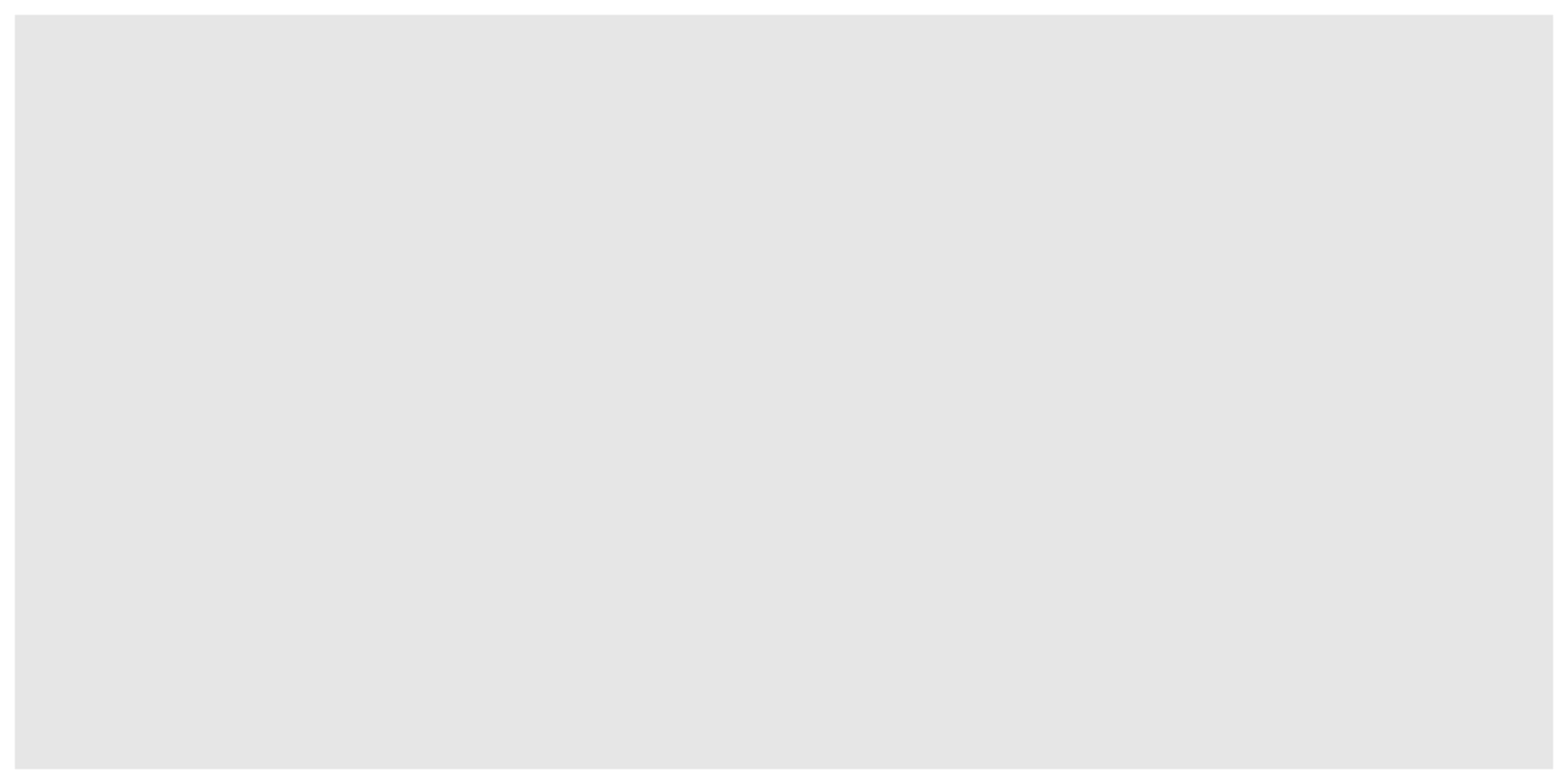
library(ggplot2)ggplot(tb_au, aes(x = year, y = count))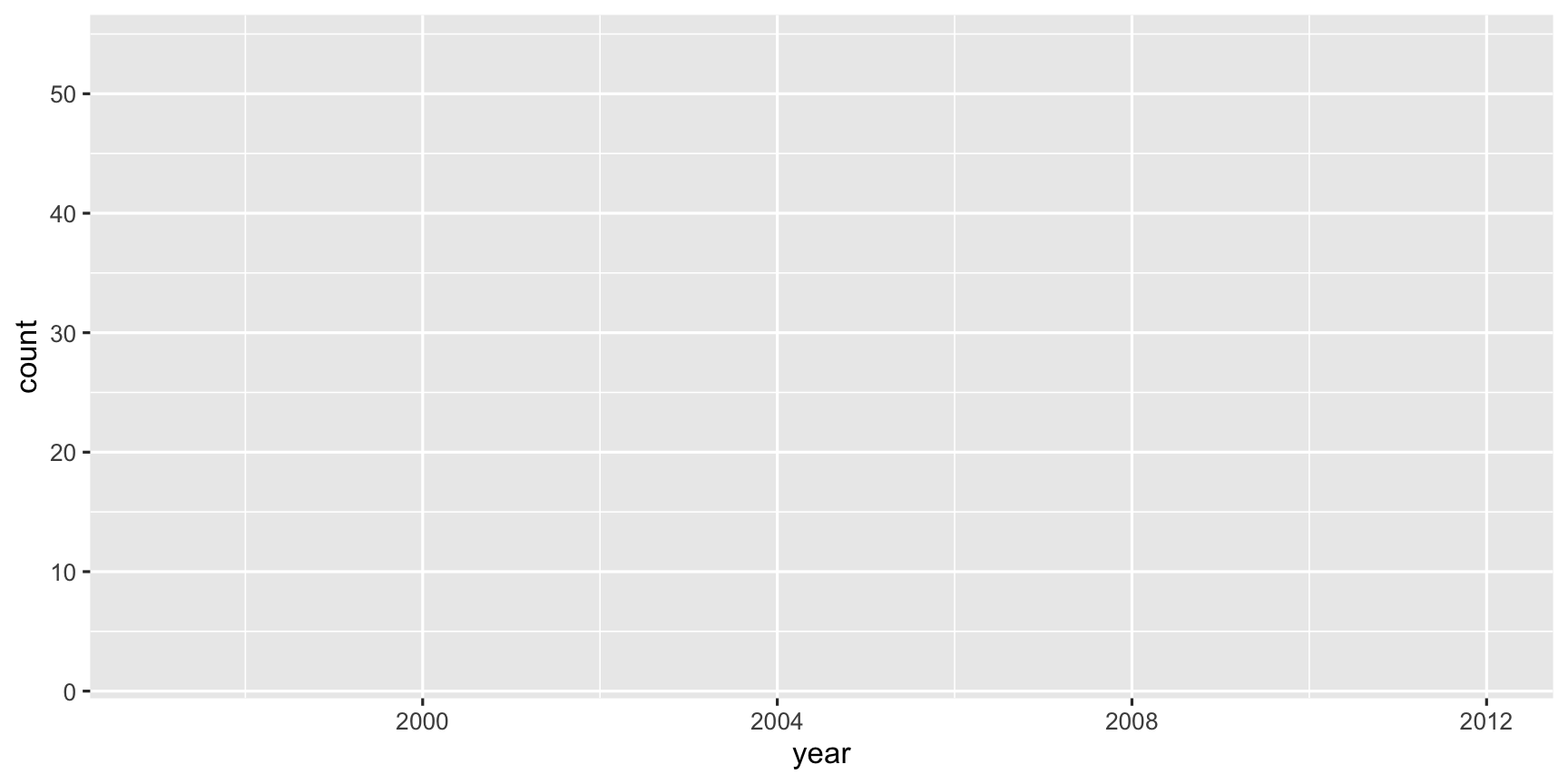
library(ggplot2)ggplot(tb_au, aes(x = year, y = count)) + geom_point()
| country | iso3 | year | count | gender | age |
|---|---|---|---|---|---|
| Australia | AUS | 1997 | 8 | m | 15-24 |
| Australia | AUS | 1998 | 11 | m | 15-24 |
| Australia | AUS | 1999 | 13 | m | 15-24 |
| Australia | AUS | 2000 | 16 | m | 15-24 |
| Australia | AUS | 2001 | 23 | m | 15-24 |
| Australia | AUS | 2002 | 15 | m | 15-24 |
| Australia | AUS | 2003 | 14 | m | 15-24 |
| Australia | AUS | 2004 | 18 | m | 15-24 |
| Australia | AUS | 2005 | 32 | m | 15-24 |
| Australia | AUS | 2006 | 33 | m | 15-24 |
library(ggplot2)ggplot(tb_au, aes(x = year, y = count)) + geom_col()
library(ggplot2)ggplot(tb_au, aes(x = year, y = count, fill = gender)) + geom_col()
library(ggplot2)ggplot(tb_au, aes(x = year, y = count, fill = gender)) + geom_col(position = "fill")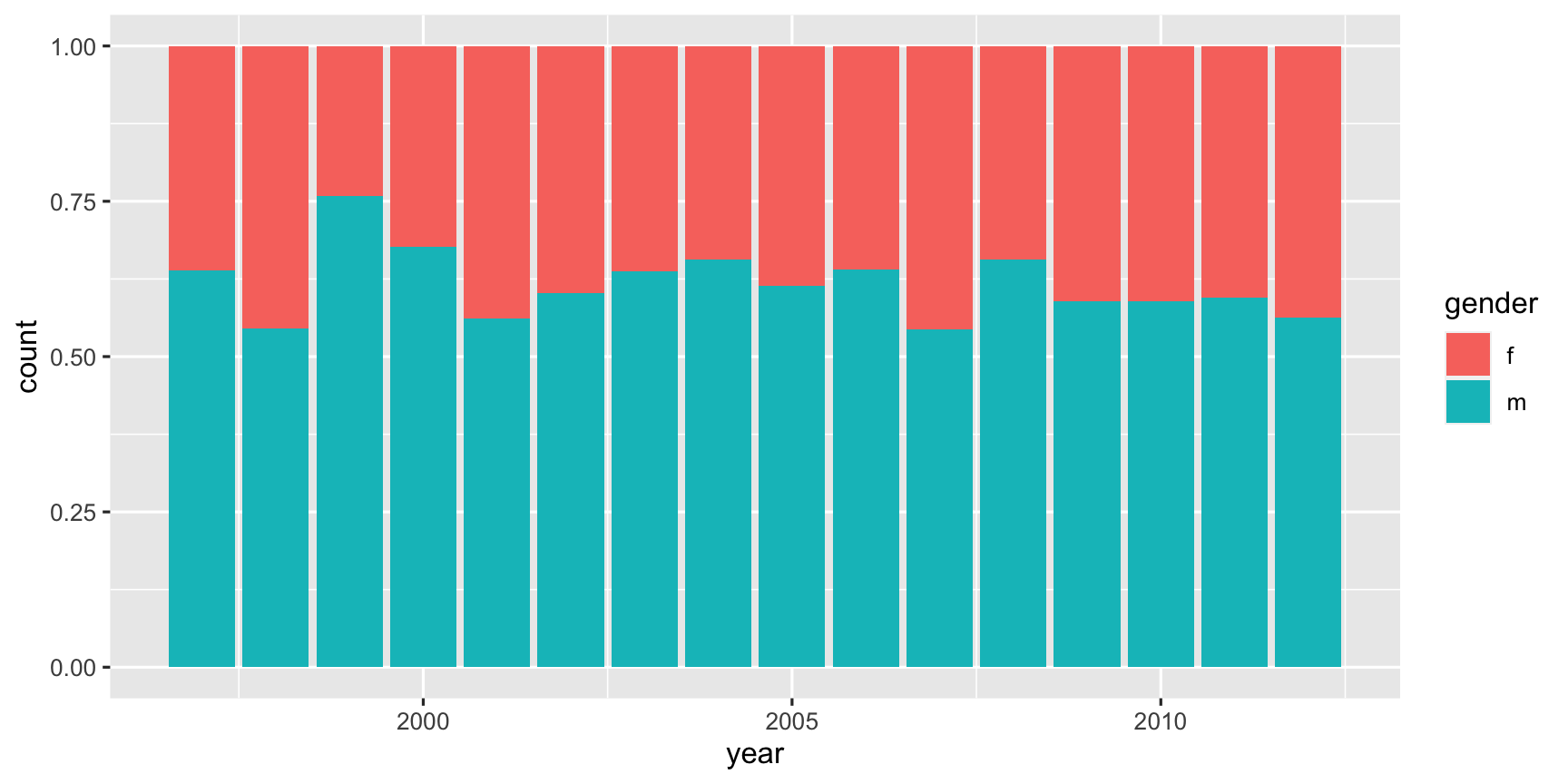
library(ggplot2)ggplot(tb_au, aes(x = year, y = count, fill = gender)) + geom_col(position = "fill") + scale_fill_brewer( palette = "Dark2" )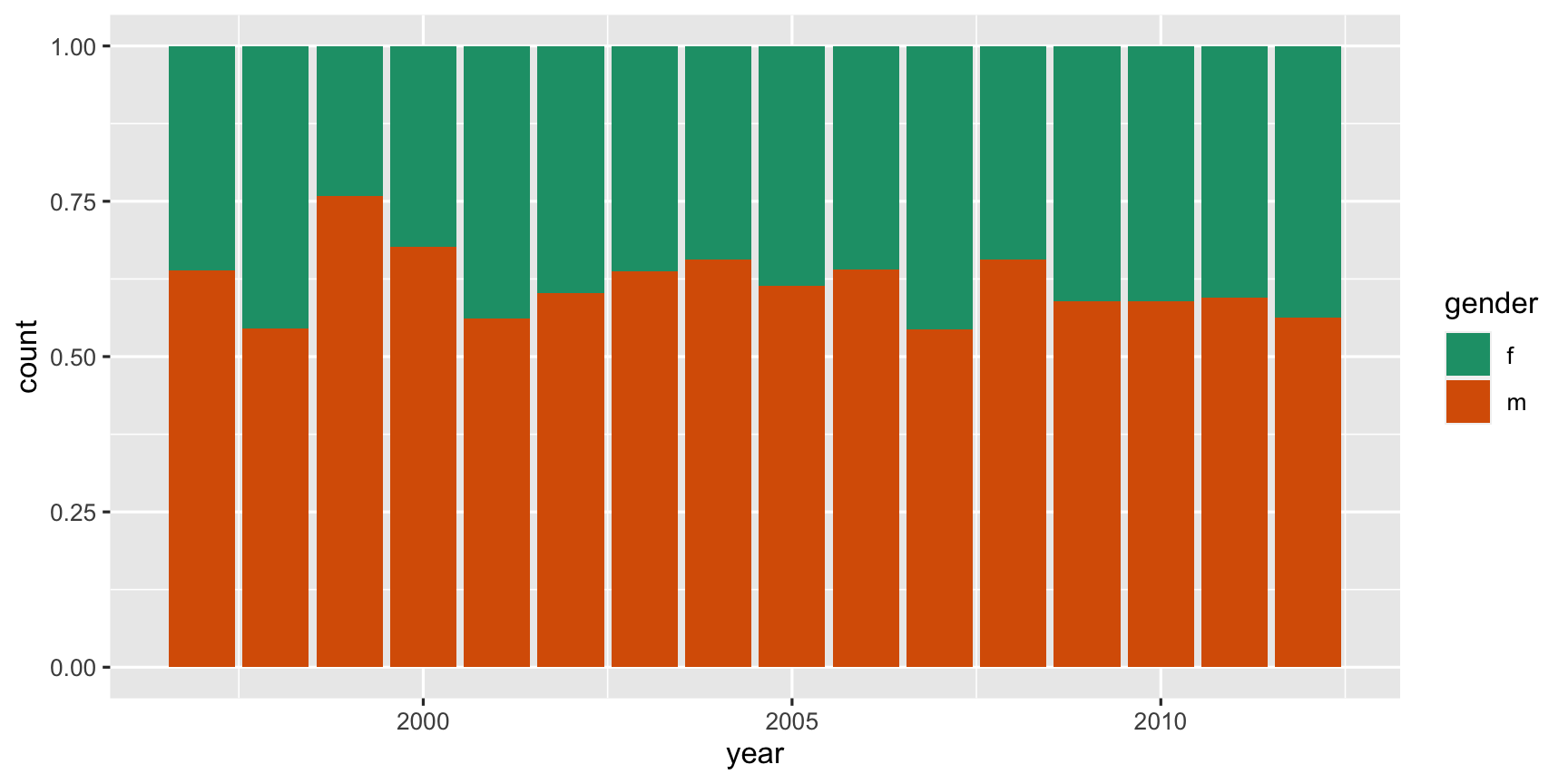
library(ggplot2)ggplot(tb_au, aes(x = year, y = count, fill = gender)) + geom_col(position = "fill") + scale_fill_brewer( palette = "Dark2" ) + facet_wrap(~ age)
tb_augeom_colposition = "fill" option in geom_bar sets the heights of the bars to be all at 100%. It ignores counts, and emphasizes the proportion of males and females.ggplot(tb_au, aes(x = year, y = count, fill = gender)) + geom_bar(stat = "identity", position = "fill") + facet_grid(~ age) + scale_fill_brewer(palette="Dark2")
ggplot(tb_au, aes(x = year, y = count, fill = gender)) + geom_bar(stat = "identity", position = "fill") + facet_grid(~ age) + scale_fill_brewer(palette="Dark2")
What do we learn
100% charts, is what excel names these beasts. What do we learn?
ggplot() is the main functionggplot(data = [dataset], mapping = aes(x = [x-variable], y = [y-variable])) + geom_xxx() + other optionslibrary(tidyverse)ggplot(tb_au, aes(x = year, y = count, fill = gender)) + geom_col(position = "fill") + scale_fill_brewer( palette = "Dark2" ) + facet_wrap(~ age)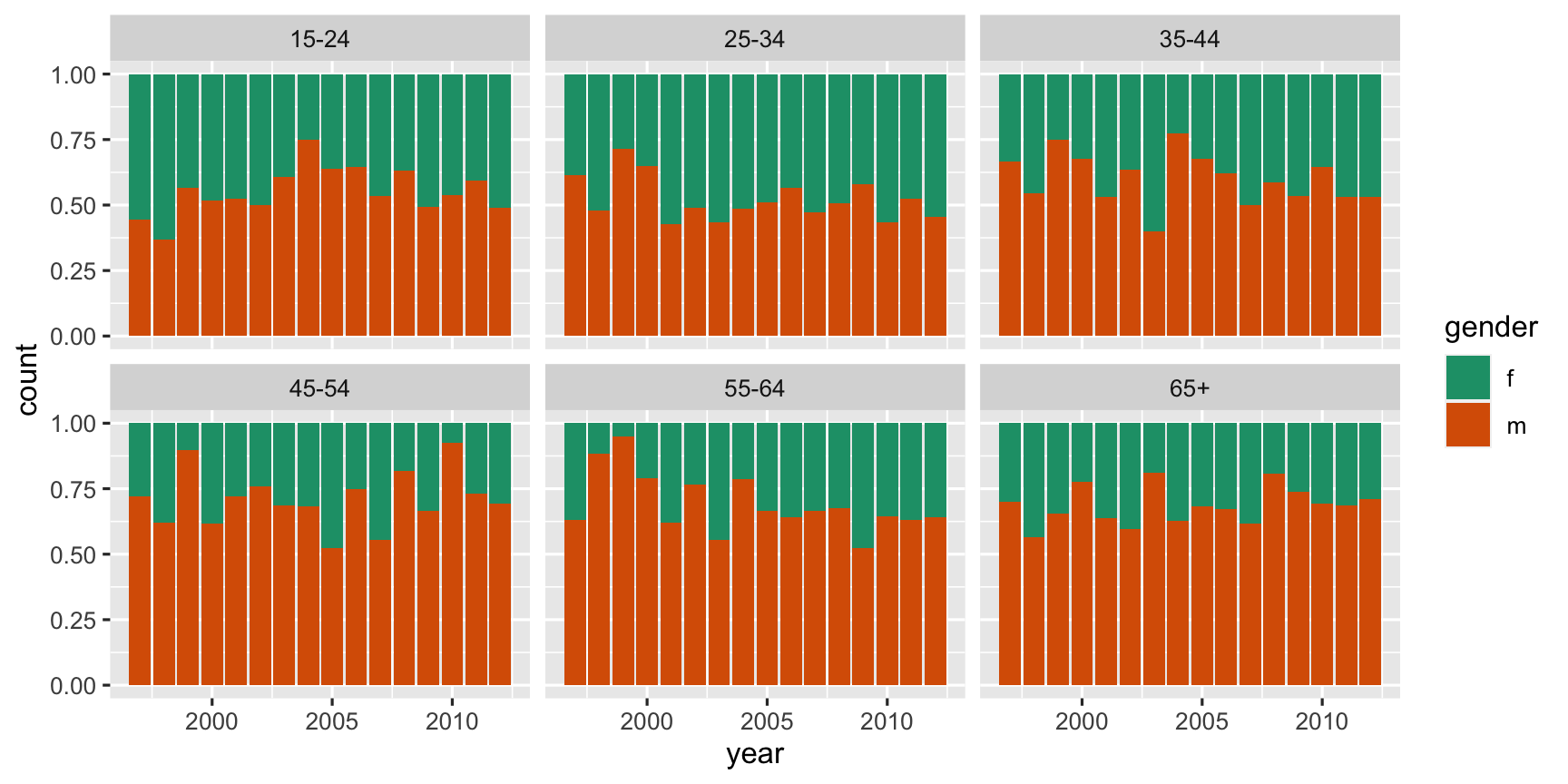
ggplot(tb_au, aes(x = year, y = count, fill = gender)) + geom_col(position = "fill") + scale_fill_brewer( palette = "Dark2") + facet_grid(~ age)
ggplot(tb_au, aes(x = year, y = count, fill = gender)) + geom_col() + scale_fill_brewer( palette = "Dark2") + facet_grid(~ age)
, position = "fill" was removedggplot(tb_au, aes(x = year, y = count, fill = gender)) + geom_col(position = "dodge") + scale_fill_brewer(palette = "Dark2") + facet_grid(~ age)
, position="dodge" is used in geom_colggplot(tb_au, aes(x = year, y = count, fill = gender)) + geom_col() + scale_fill_brewer(palette = "Dark2") + facet_grid(gender ~ age)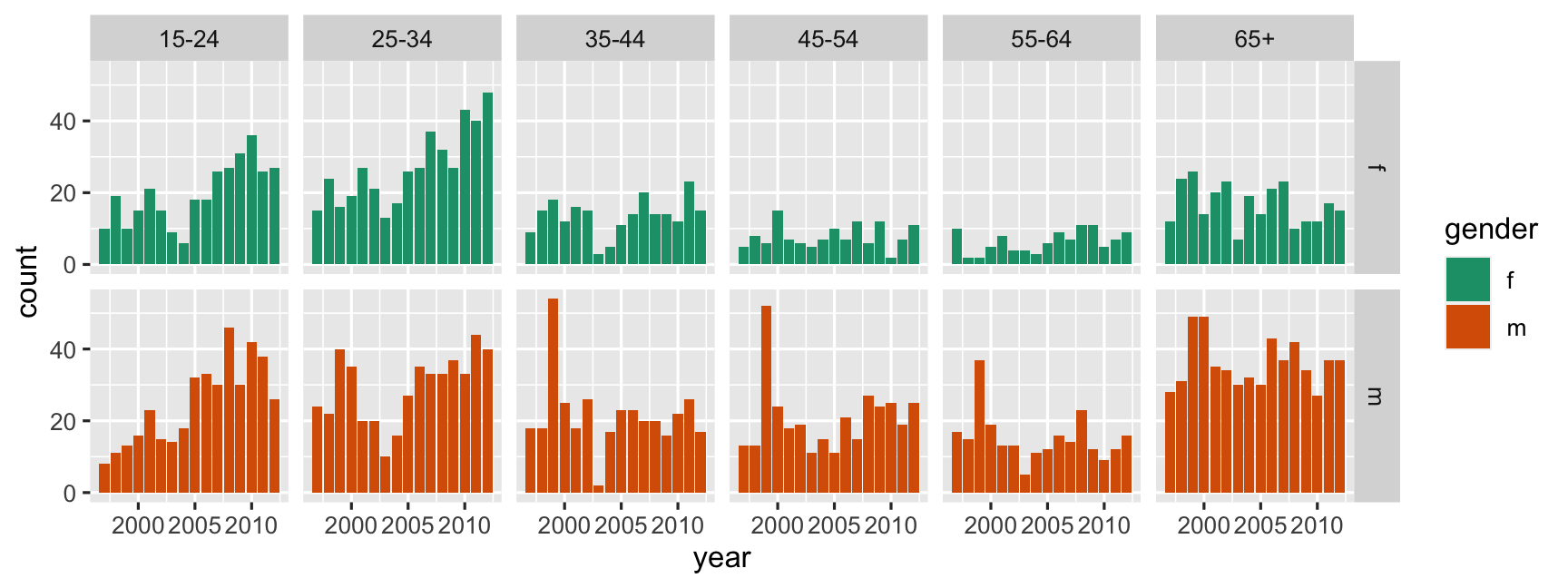
facet_grid(gender ~ age) + faceted by gender as well as agefacet_grid vs facet_wrapggplot(tb_au, aes(x = year, y = count, fill = gender)) + geom_col() + scale_fill_brewer(palette="Dark2") + facet_grid(gender ~ age) + coord_polar() + theme(axis.text = element_blank())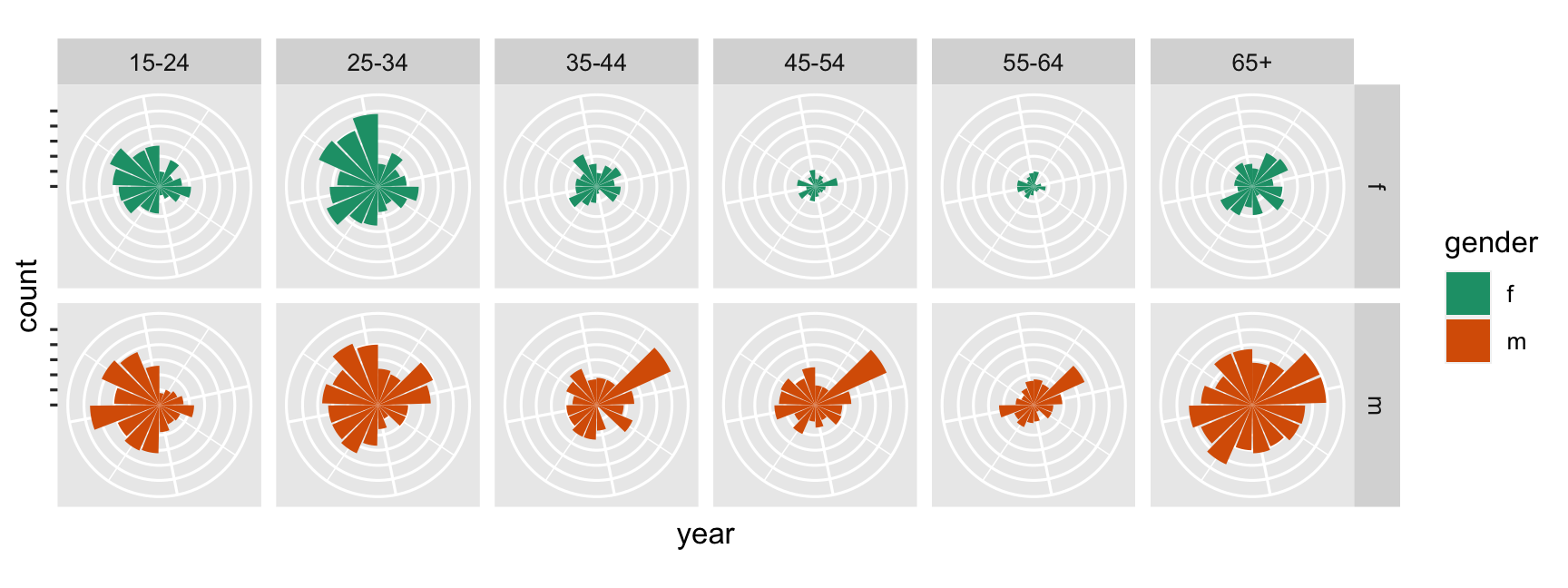
coord_polar() + plot is made in polar coordinates, rather than the default Cartesian coordinatesggplot(tb_au, aes(x = 1, y = count, fill = factor(year))) + geom_col(position = "fill") + facet_grid(gender ~ age)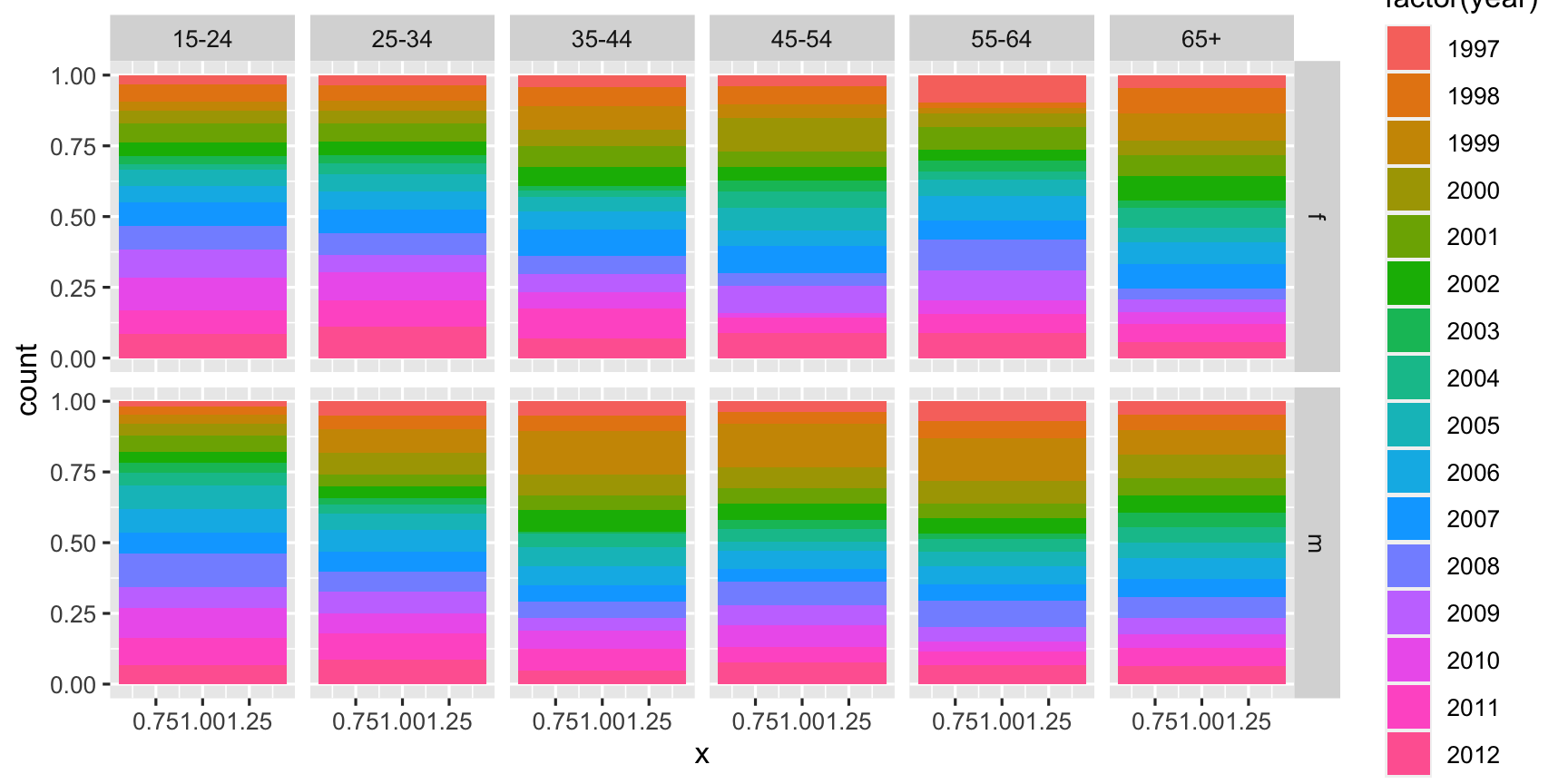
ggplot(tb_au, aes(x = 1, y = count, fill = factor(year))) + geom_col(position = "fill") + facet_grid(gender ~ age) + coord_polar(theta = "y") + theme(axis.text = element_blank())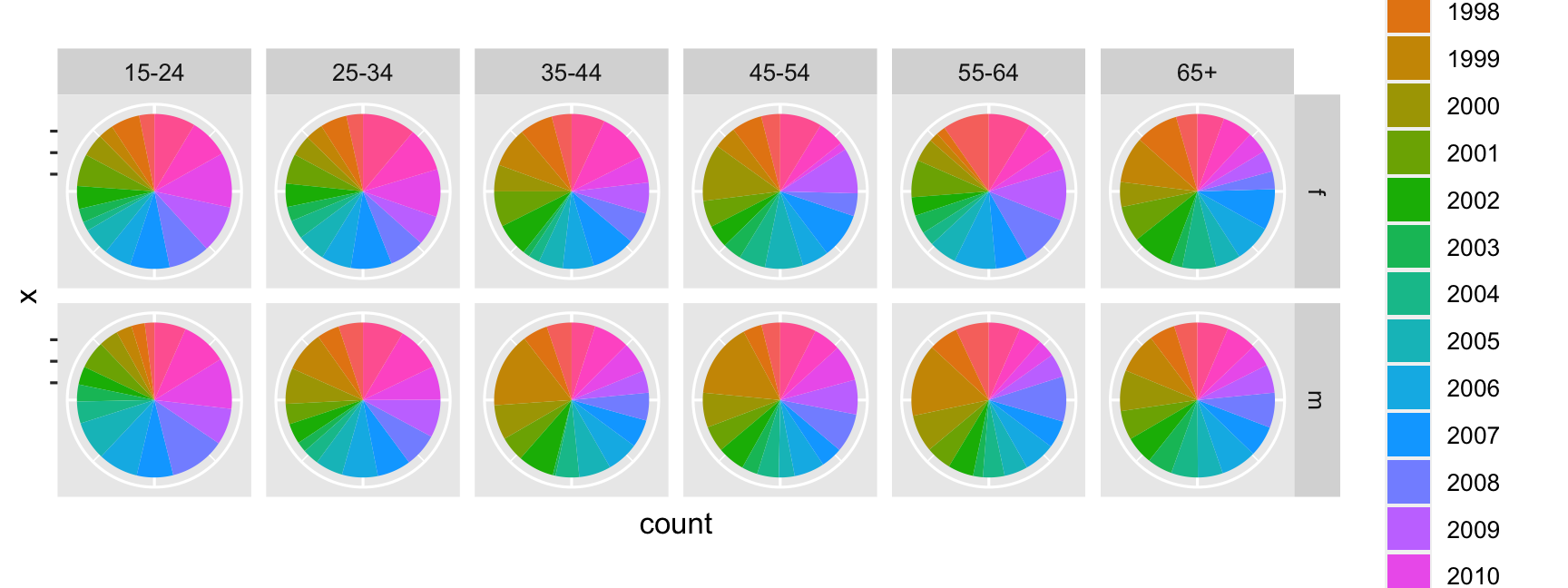
coord_polar(theta="y") is using the y variable to do the angles for the polar coordinates to give a pie chart.The various looks of David Bowie

Lecturer: Nicholas Tierney
Department of Econometrics and Business Statistics
ETC1010.Clayton-x@monash.edu
March 2020
Keyboard shortcuts
| ↑, ←, Pg Up, k | Go to previous slide |
| ↓, →, Pg Dn, Space, j | Go to next slide |
| Home | Go to first slide |
| End | Go to last slide |
| Number + Return | Go to specific slide |
| b / m / f | Toggle blackout / mirrored / fullscreen mode |
| c | Clone slideshow |
| p | Toggle presenter mode |
| t | Restart the presentation timer |
| ?, h | Toggle this help |
| Esc | Back to slideshow |